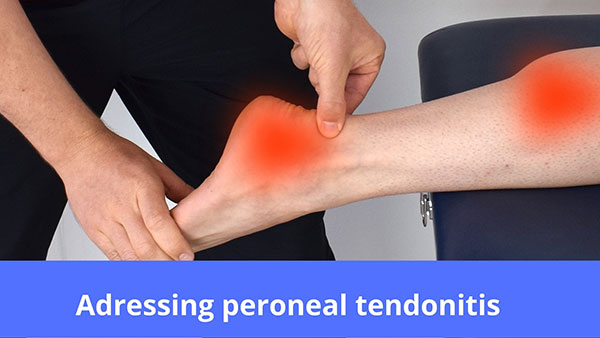There are people who every time they buy shoes, they must get the sharp pangs of peroneal tendonitis. If that’s you, then you are probably thinking, ‘can shoes cause peroneal tendonitis? Before we get to the answer, let’s drop a little bit about this condition.
Peroneal Tendonitis Basics
Peroneal tendonitis also known as peroneal tendinopathy refers to the inflammation of the tendons under the ankle. The sharp feeling of pain follows the peroneal tendon which stretches from the lower body and ends in the ankle. Other common symptoms of this condition include swelling, pain during exercises and the ankle area feels warm when touched.
This condition is commonplace among runners because they tend to pull their muscles one too often. Secondly, those with higher arches are also top victims as they heel strike causing ankle problems.
And now back to our question.
Can shoes cause Peroneal Tendonitis?
The answer is both yes and no.
First, a change of shoes can result in foot distortion (rolling of the tendons). Let’s say your first pair was stability-enhancing. Gradually, you start to beat through the support/midsole. Let’s say the outside edge is done, your foot starts to roll outwards and muscles adapt that way.
Now, when you go for new shoes, either neutral or supportive, your new posture again gets twisted. This is because you were used to the previous leaning. You get it right?
The same can be said when buying supportive shoes. If the support needs to be inwards, then the next shoe must be the same. Going for neutral or those with outward support, you are forcing your muscles to adapt to a new direction. This back and forth movement can twist your tendons resulting in serious cases of peroneal tendonitis.
In simple terms, inappropriate shoes can cause peroneal tendinopathy. And by inappropriate we mean old shoes or those with improper support. Realize that when buying shoes for arch support, wrong stability does more bad than good.
Other Causes of peroneal tendonitis
- A change in running routine
Runners or anyone who runs can strain their peroneal tendons when they shift their routine. This could be a shift in shoes, mileage, or terrain. If you wear extra devices for the knees or hips can result in a twist in running style.
When running on uneven terrain, the foot rolls both in and out to control pronation. This constant agitation is not good for the peroneal tendons.
- Ankle sprain and other injuries
Peroneal tendinopathy is frequently associated with ankle sprains. Like we said before, this is where the peroneal tendons end at. since these tendons promote lateral stability any injury or inflammation to the ankle area results in less stability.
Peroneal Tendonitis Treatment
The best treatment for peroneal tendinopathy is rest. Yes, you got that right. This injury is because of muscle overuse. In this case, taking some time off from your active lifestyle will foster faster healing.
Afraid of a sedentary lifestyle? Worry less. Swimming is usually recommended as a way to keep fit. But if you feel any pain right away or the day after, stop. The next common treatment option is the use of ice. If you apply cold therapy to the inflamed area, the symptoms will subside gradually.
Bracing is also ideal if your ankle keeps rolling. So make sure to lock it in place before going about your daily activities.
For extreme pain, some pain killers will come in handy. For large tendon tears, you might want to consult specialist doctors. This will probably involve surgery. This should be used as a last resort when other methods have failed to correct the condition. If your peroneal tendonitis is still mild (comes and goes), the next section will definitely interest you.
How to prevent peroneal tendonitis
We have talked about all the causes of peroneal tendonitis. However, without knowing how to prevent it, it could easily reoccur. So how do you keep this condition away for good?
Shoes. Always wear good shoes and be consistent in your style and design. If your ankle is weak or needs proper support, then try out ankle support shoes. For extremely swollen ankles, shoes alone won’t cut it. You must practice muscle strengthening for an all-round healing.
Be watchful of your landings-especially on uneven grounds. You don’t want to let the terrain overwork your tender tendons. Where possible avoid such terrains altogether. It is important that you practice these preventive measures in order to keep peroneal tendonitis at bay.
Wrap up
If you have peroneal tendonitis, understand that a change in shoes will most probably make it worse. So when buying running shoes, boots, or walking shoes, stick to your arch type. If possible, keep going for the same brand. A sudden shift to a different brand might come with improper biomechanics.
Secondly, try to avoid running on uneven terrains. This can work up the tendons causing too much unnecessary pain. If you have ankle sprains or any other hip or knee injury, it’s best that you take some time off and heal.
If your peroneal tendonitis seems to linger for long. You may want to try home remedies. If there’s no recovery, a visit to a physical therapist might do some good. With advanced technological equipment such as MRI scanners, medics can check for any tendon ruptures and take the right approach to restore your sanity.

